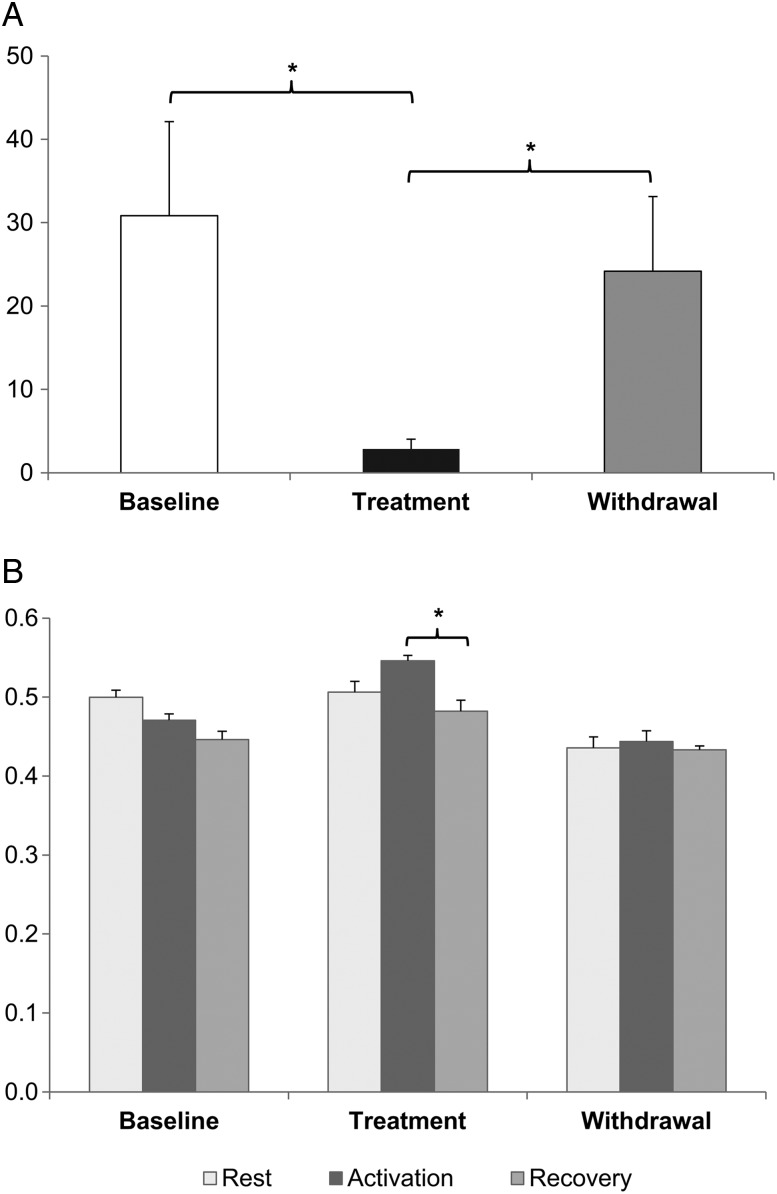Figure 1.
(A) Number of total paroxysmal manifestations in patients with glucose transporter type 1 deficiency syndrome (GLUT1-DS) during the three phases of the study (baseline, treatment and withdrawal) of 2 months each. A significant reduction of non-epileptic paroxysmal manifestations was observed when patients were treated with triheptanoin for 2 months (*p<0.05). Of note, the total number of events was comparable between the baseline and withdrawal phases. Error bars represent SEM. (B) Changes in the inorganic phosphate and phosphocreatine (Pi/PCr) ratio from 31P-NMR spectroscopy (f-MRS) studies during the three phases of the study (baseline, treatment and withdrawal). During baseline, f-MRS showed an abnormal brain energy profile in patients with GLUT1-DS with no change in the Pi/PCr ratio during visual stimulation. After 2 months of treatment with triheptanoin, the profile was corrected and we observed an increase in the Pi/PCr ratio during visual stimulation followed by a decrease during recovery (*p=0.021). Error bars represent SEM of within-subject differences using the method of Morey.

